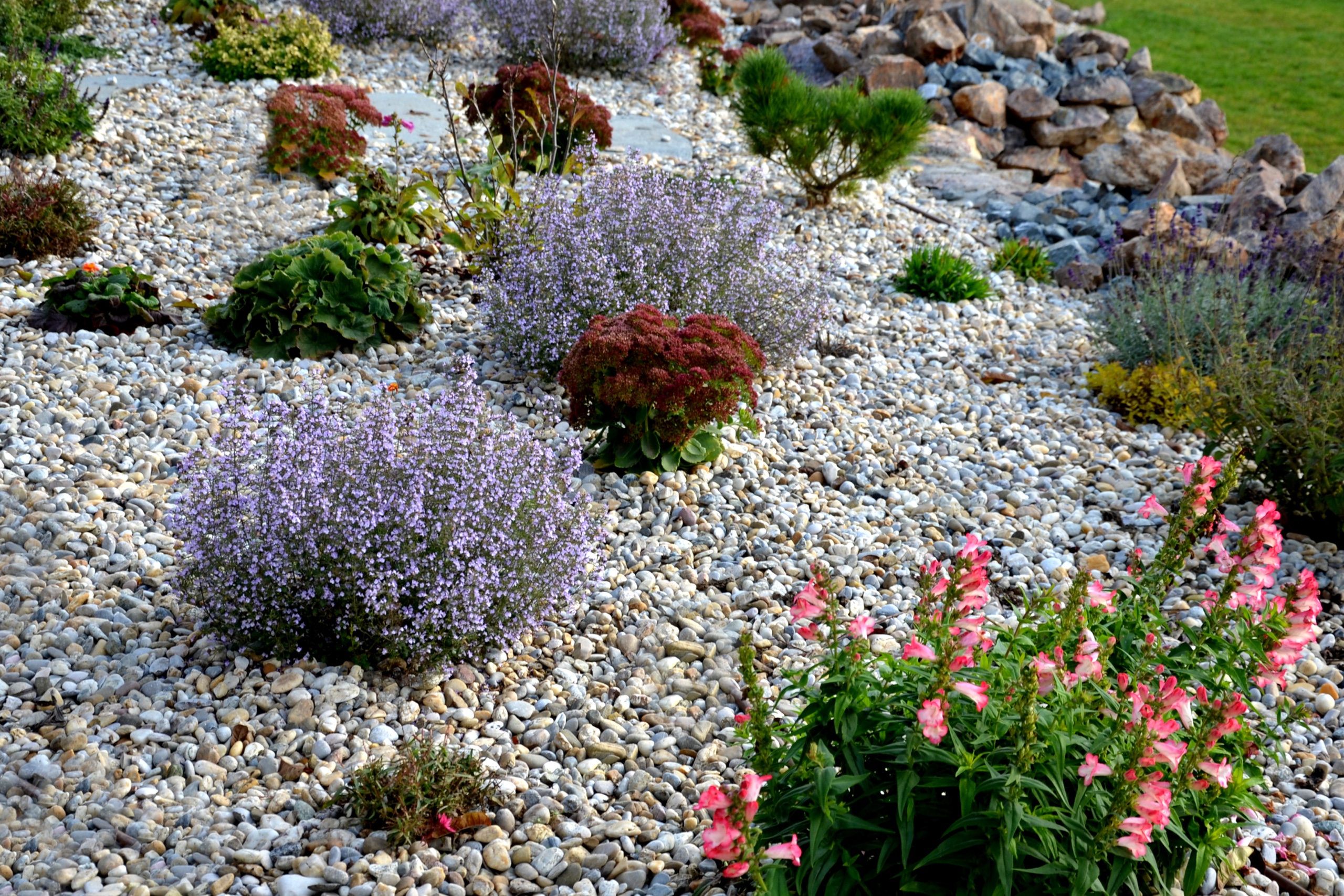Many parts of California are sadly at risk for wildfire, especially in the wildland-urban interface (WUI)—where urban and suburban development meets undeveloped areas. Not to mention, wildfires have recently become more frequent, intense, and destructive due to more wildland vegetation, more development in the WUI, and, of course, climate change. Thankfully, there are a handful of steps you can take at home to create a fire-smart landscape. Read on for a cheat sheet to planning and maintaining a fire-smart and flame resistant landscape.
Landscape Design Ideas: Landscape Materials and Landscaping Rocks
Defensible space refers to the areas you must plan in order to reduce fire danger and to give firefighters the room to address embers and spot fires before they grow. In order to create ample defensible space, you’ll want to think about your garden in the following three zones:
Zone 0: 0-5 feet from the house
Create the most fire-resistant zone in the area closest to your home (on all sides) in order to avoid home ignition from blowing embers. Plants against combustible siding and under/near windows or doors are your greatest hazard in these areas. Keeping your soil hydrated in this area is also key. A thin layer of compost (like Organic Green Waste Compost) with a thin layer of mulch (like Mini Mulch Fir Bark) will support microbial life in your soil, which will build soil aggregates. When you irrigate (or when it rains) water will be able to infiltrate into the soil, creating a reservoir for water. This keeps your plants well hydrated, thus making them less susceptible to fire.

These landscape materials are okay in Zone 0:
- Vegetables, succulents, grasses, groundcover, seasonal flowering annuals, or lawn
- Gravel or pebbles can be used as rock mulch closer to the home because they can prevent/slow down fires
- Non-combustible materials (gravel, brick, compost, or decomposed granite)
These landscape materials are not okay in Zone 0:
- Branches
- Climbing plants
- Litter in roof gutters
- Combustible items under decks
- Combustible containers, mulch, fencing, furniture, firewood, tanks
- Combustible landscape items like wood gates, fences, arbors, and trellises
Zone 1: 5-30 feet from the house
Create a “lean and clean” environment in this zone to reduce heat and movement of the flame. Here’s how:
- Plant low, well-irrigated plants (see the list from Zone 0)
- Use non-combustible materials for walkways (see list above)
- Break up mulched areas with hardscape material (gravel or stone)
- Move firewood, lumber, and other common landscape items out of Zone 1
- Allow ample plant spacing
- Keep up your maintenance
- Add a small water feature or patio in this zone if possible
- Work with your neighbor if this zone extends into their yard
Zone 2: 30-100+ feet from the house
In this zone—the space between manicured gardens and adjacent to the house and fringe areas—aim to eliminate continuous, dense vegetation (both vertically and horizontally) in order to decrease the energy and speed of a fire. Here’s what you can do in Zone 2:
- Move anything burnable during a nearby wildfire 30 feet away from structures
- Wood mulch is acceptable
- Allow for ample plant spacing
- Maintain plants farthest from the house (but they may not need irrigation)
- Work with your neighbors to create continuity
Fire Resistant Plants
When landscaping for wildfire safety, refer to this list of fire-resistant plants recommended by Cassy Aoyagi of Form LA Landscaping and Douglas Kent, author of Firescaping and a lecturer on ecological land management at Cal Poly Pomona.
- Buckwheat
- Catalina Cherry
- Coral Bells
- Island Mallow
- Lemonade Berry
- Lily of the Nile
- Manzanita
- Oak
- Rockrose
- Succulents
- Woolly Blue Curl
- Yarrow
- Yucca
Watch Douglas Kent’s Firescaping class here.
Garden and Landscaping Supplies in California
Building fire-smart landscaping is no easy feat, but it helps to keep our families, friends, homes, and communities safe during this season’s heightened fire danger.
Lyngso is a top resource for garden and landscaping supplies in California and can help to make this planning and maintenance process a little easier.
For more information about safely firescaping your landscape, watch the video below:















